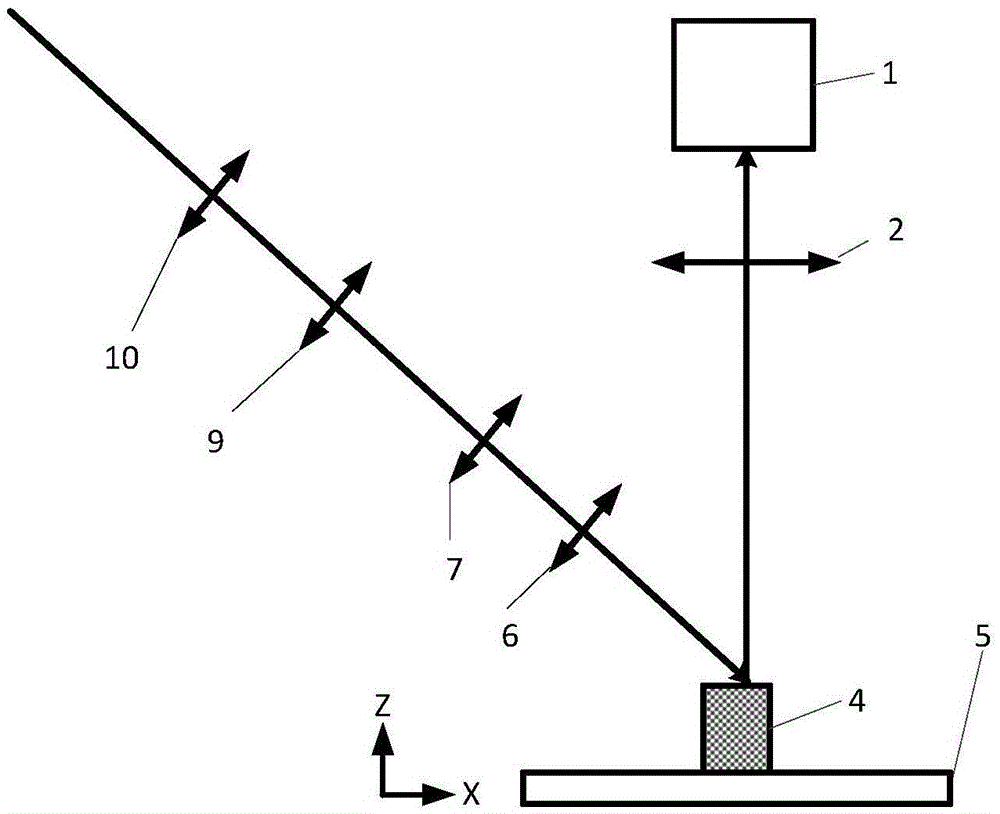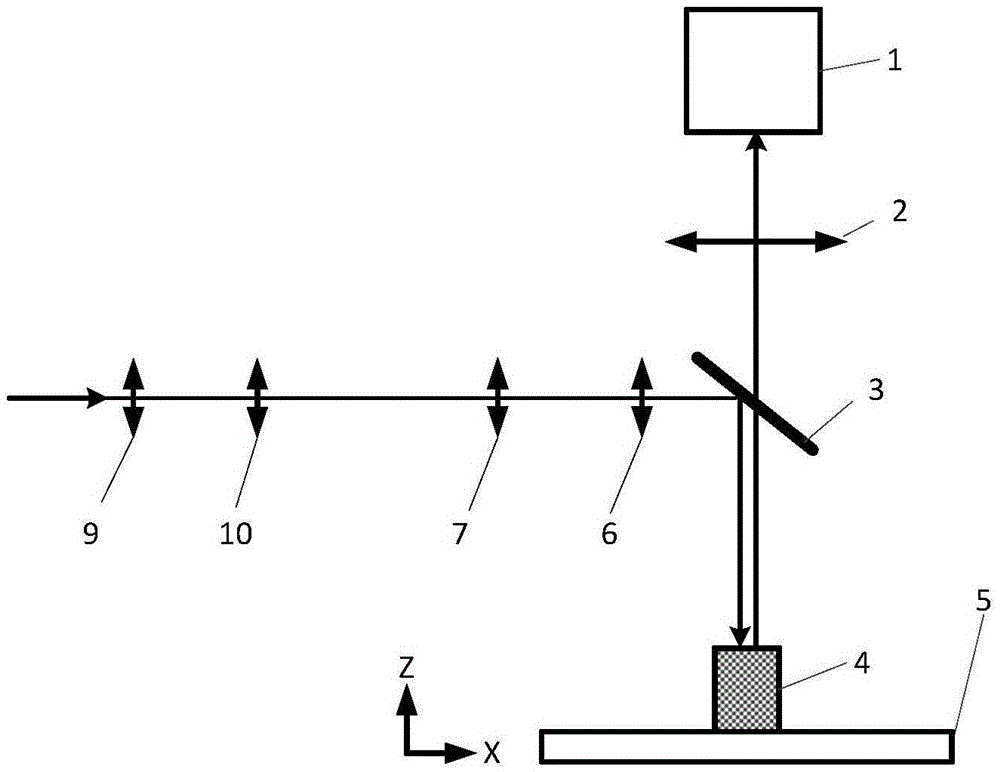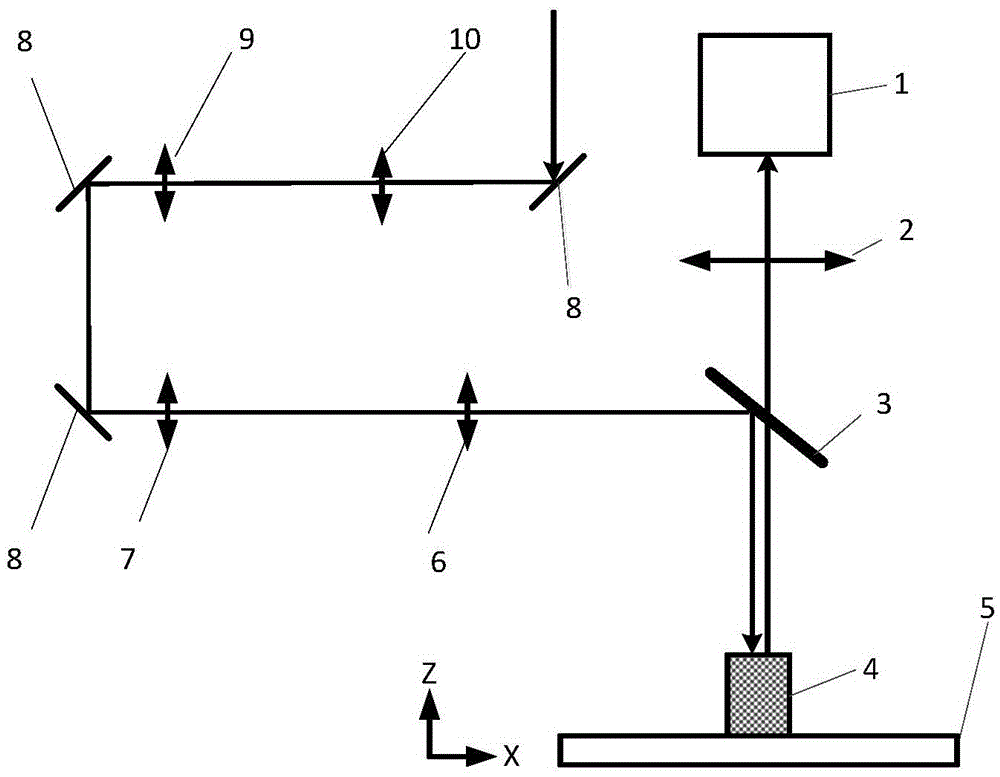A Scanning Imaging System for Weak Light Signals
A scanning imaging and line scanning technology, which is applied in the field of scanning imaging systems with weak light signals, can solve the problems of weak signals and low imaging speed, and achieve the effects of fast imaging speed, good imaging effect and improving light energy utilization rate.
- Summary
- Abstract
- Description
- Claims
- Application Information
AI Technical Summary
Problems solved by technology
Method used
Image
Examples
Embodiment 1
[0033] An imaging system such as figure 1 Shown is the setup for high-speed scanning imaging using infrared light. Including line scan module and spot shaping module.
[0034] The line scan module includes a line detector 1 (TDI-CCD) and an imaging lens 2, and the photosensitive surface of the TDI-CCD is mapped to an area on the focal plane by the imaging lens 2 such as Figure 4 As shown, it is a rectangle whose length is B and width is C. We need to shape the illumination spot to form an elliptical illumination area 12 that can just cover the imaging area 13, so that we can maximize the energy of the illumination light.
[0035] The spot shaping module sequentially includes a beam expanding unit and a beam reducing unit according to the direction of the optical path. The beam expander unit includes a first spherical mirror concave lens 10 and a second spherical mirror convex lens 9 in the optical path, the optical axes of which are coincident and confocal. The beam shrin...
Embodiment 2
[0037]An imaging system such as figure 2 As shown, the high-speed scanning imaging device for laser-excited fluorescence includes a line scanning module and a spot shaping module.
[0038] The line scan module includes a line detector 1 (TDI-CCD) and an imaging lens 2, and the photosensitive surface of the TDI-CCD is mapped to an area on the focal plane by the imaging lens 2 such as Figure 4 As shown, it is a rectangle whose length is B and width is C. We need to shape the illumination spot to form an elliptical illumination area 12 that can just cover the imaging area 13, so that we can maximize the energy of the illumination light.
[0039] The spot shaping module sequentially includes a beam expanding unit and a beam reducing unit according to the direction of the optical path. The beam expander unit includes a first spherical mirror-convex lens 10 and a second spherical mirror-convex lens 9 in the optical path, the optical axes of which are coincident and confocal. Th...
Embodiment 3
[0042] An imaging system such as image 3 Shown is a device for high-speed scanning imaging using laser-excited fluorescence, including a line scanning module and a spot shaping module.
[0043] The line scan module includes a line detector 1 (TDI-CCD) and an imaging lens 2, and the photosensitive surface of the TDI-CCD is mapped to an area on the focal plane by the imaging lens 2 such as Figure 4 As shown, it is a rectangle whose length is B and width is C. We need to shape the illumination spot to form an elliptical illumination area 12 that can just cover the imaging area 13, so that we can maximize the energy of the illumination light.
[0044] The spot shaping module sequentially includes a beam expanding unit and a beam reducing unit according to the direction of the optical path. The beam expander unit includes a first spherical mirror-convex lens 10 and a second spherical mirror-convex lens 9 in the optical path, the optical axes of which coincide and are confocal. ...
PUM
 Login to View More
Login to View More Abstract
Description
Claims
Application Information
 Login to View More
Login to View More - R&D
- Intellectual Property
- Life Sciences
- Materials
- Tech Scout
- Unparalleled Data Quality
- Higher Quality Content
- 60% Fewer Hallucinations
Browse by: Latest US Patents, China's latest patents, Technical Efficacy Thesaurus, Application Domain, Technology Topic, Popular Technical Reports.
© 2025 PatSnap. All rights reserved.Legal|Privacy policy|Modern Slavery Act Transparency Statement|Sitemap|About US| Contact US: help@patsnap.com



